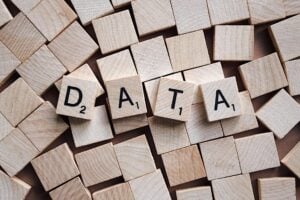Corporations are investing in data, analytics and insights capabilities at a high level. The rate of spend is likely to accelerate going forward, keeping pace with advancements in AI and other tech capabilities, as Big Data and CPG worlds intersect. Unlocking the value of data, analytics and insights lies in the actionability that drives growth.
Can you speak about the nature and power of the intersection of analytics and insights, and its impact on organizational results?
“I speak for myself, but I suspect it’s true for several of my insights colleagues across the board, that unless we are directly responsible for analytics and insights strategy, we rarely stop to think about what they mean for the organization’s overall success financially,” says Shah. “While most will agree that analytics and insights holds the power to create edge in the market, part of the difficulty in fully understanding its impact lies in the fact that it is very difficult to establish causal relationship and what its impact is on the return on investment on the company’s investment in these capabilities. Unless these capabilities drive revenue, they will not be able to show that they drive return on investment.”
Yet unlocking the value of analytics and insights lies in the actionability that drives growth. It is necessary for insights professionals to understand how these three interact and what they can do to deliver value. In terms of the value of analytics: Is it cost or is it investment?
Shah notes, “The challenge is to deliver ROI upfront and it’s a hurdle that makes analytics seem more like a cost than an investment. Further, when we look at the level of investment available for analytics and insights for most companies in principle, they cannot spend more than .25% of their total revenue because the amount of money spent on analytics and insights capabilities must be less than the investment in marketing and product development. And then lastly, over 75% of companies aspire to be data driven, but only one in four is actually able to deliver analytics value through action. Actionability of insights is the missing link.”
She continues, “Let’s look at some inefficiencies in the CPG environment, like business planning. Business planning must deploy insights that are prescriptive and not merely diagnostic. Without guidance and action, business plans cannot deliver value. For example, an unintuitive business plan recommends grow distribution, but one with data driven insights goes further to identify which consumers to go after with which items and also provides guidance on how to achieve that and estimates its impact on top and bottom lines. This increases efficiency.”
Shah also points to promotions as an example of increasing efficiency of insights.
She says, “If you look at overall promotions, the majority of them see three in five promotions have no incrementality. Analytics and insights are not only for post-promotion reporting of performance. They should be used to inform promotional strategy to drive true incrementality. For example, targeted versus mass promotion. What about the timing, frequency, or depth of promotion? What about which consumers respond more profitably and how to leverage that insight for agility and optimization?”
And lastly, there is the area of predictability.
“Predictability is an area of huge potential for analytics and insights,” says Shah. “For example, a CPG company can significantly improve the rate of success of its new product development if it’s able to predict what the shoppers and consumers are likely to do and want over the horizon. And getting more pointed and accurate with prediction is needed to unlock the power of product innovation.”
Connecting Analytics & Insights
What exactly is the relationship between data analytics and insights?
“Now that we have considered the cost and value of analytics and insights, let us take a closer look at their relationship,” says Shah. “Data analytics and insights have a very close and interdependent relationship. Data, as we know, is just rough, unprocessed facts that by themselves do not provide much insight or actionability. When they’re cleaned, scrubbed, analyzed, and visualized they become information. And information is often delivered in the form of reports, dashboards, and other visualizations. These are also limited because their actionability is limited without having deeper insight.”
“That brings us to insight. Insight is an accurate, deep, intuitive understanding of a subject, and it informs decision or action. But analytics are the engines that turn data into insights that are instrumental in building an understanding to address business questions, draw conclusions, and make what many refer to as data-driven decisions. And the interplay of all these results in action, results in transformation and decision. And when we take action, it generates new data. This is what brings agility to insights. Agility is the ability to iteratively measure, learn, and change to optimize insights and the results that they drive.”
Driving Insights into Action
That call to action is to either fully tap into the power of analytics with actionable insights or get left behind, relates Shah. “Just a quick glance at the power of data and analytics, and what unleashes it, is when insights drive revenue. For insights to drive revenue, they must be diagnostic and predictive in nature and have actionability and agility. Diagnostics provide the hindsight needed to understand what happened with a view at the category, retailer, shopper or consumer, and competition. In short, diagnostics should be able to answer questions like what, when, where, and most importantly, try to answer why and how. Without an understanding of the causes, the insight will not provide actionability. When we answer the why, we most often know what we need to do to drive change.”
“Next comes foresight. Analytics and insights have two main purposes. One is to ensure current success, and two is to future proof the business. Predictiveness is the ability to provide foresight and inform the future. What will the competitive landscape look like? What will the consumer need or want? How will shoppers evolve? And how will retail change over the horizon? We must constantly ponder these questions and relentlessly pursue insights to address these business needs.”
What is actionability? “Hindsight and foresight, as we’ve seen, now provide us with the ability to answer the now what or how to. In short, fulfill the imperative obligation to recommend action and drive change. And insights inform which levers to deploy. For example, the four p’s, optimize assortment, distribution, pricing, promotion. The most effective insights teams have agility built into their fabric with continuous measurement, feedback, and iterative improvement,” says Shah.
Watch the full presentation as Shivani Shah discusses a few specific retail use cases that leverage analytics and insights to drive action. Plus: All Things Insights’ Seth Adler and Shah further discuss how to deliver action and manage organizational change.
Contributor
-

Matthew Kramer is the Digital Editor for All Things Insights & All Things Innovation. He has over 20 years of experience working in publishing and media companies, on a variety of business-to-business publications, websites and trade shows.
View all posts





























































































































